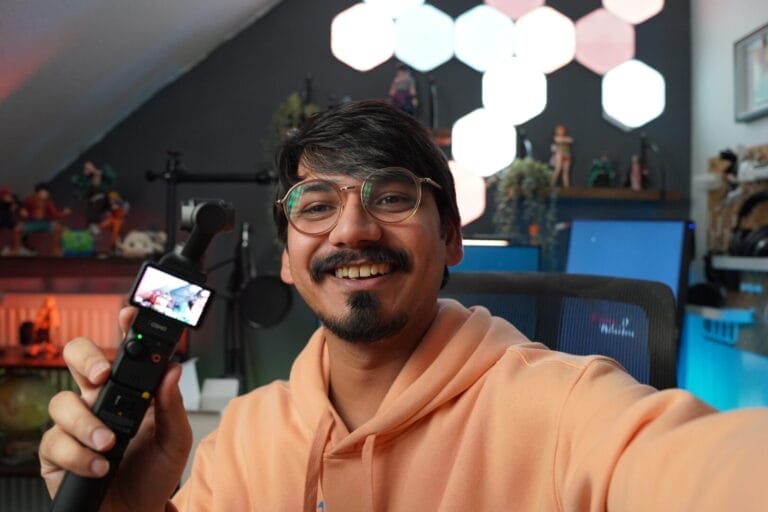Osmo Pocket 3 VS Sony ZV-1 M2, Best Vlog Camera?
When it comes to choosing between the Sony ZV1 Mark II and the DJI Osmo Pocket 3 for vlogging, there are several key factors to consider.
Let’s break down these areas to help you decide which camera would be better for your vlogging needs:
Osmo Pocket 3 VS Sony ZV-1 M2
Video Quality:
The Osmo Pocket 3 offers excellent video quality, while the ZV1 Mark II provides outstanding video quality as well. You won’t be disappointed with either camera in this respect.
Color Profiles:
The ZV1 Mark II provides more options for color profiles, allowing you to manipulate the look of your footage during editing. On the other hand, the Osmo Pocket 3 allows you to add non-destructive filters in the Mimo app, providing greater flexibility with the desired look.
Color Grading:
Both cameras offer a log profile that produces flat footage, but the ZV1 Mark II’s 8-bit color may make the color grading process slightly more rigid compared to the Osmo Pocket 3’s 10-bit color. If you require more control over color grading, the Osmo Pocket 3 might be the better option.
Low-Light Performance:
The Osmo Pocket 3 has a low-light video mode that delivers great image quality in low-light conditions. Although the ZV1 Mark II lacks this specific feature, it still performs well in low-light situations. The Osmo Pocket 3 does a slightly better job and produces clearer footage due to its gimbal.
Stabilization:
The ZV1 Mark II offers active stabilization, but it falls short compared to the smoothness achieved with the Osmo Pocket 3’s built-in gimbal. If stabilization is crucial for your vlogging, the Osmo Pocket 3 would be a better choice.
Focal Length and Zoom:
The ZV1 Mark II has the advantage of a focal length range from 18mm to 50mm, which maintains high-quality images throughout. The Osmo Pocket 3, on the other hand, only offers digital zoom capability, which may not provide the same level of quality as optical zoom.
Background Blur:
If having a blurry background in your footage is important to you, the Osmo Pocket 3 has a shallow depth of field capability that separates your subject from the background. The ZV1 Mark II allows you to control the amount of background blur through aperture adjustments.
Focus Modes:
The ZV1 Mark II has a useful Focus Mode called Product Showcase, which quickly focuses on objects even when your eyes are visible in the frame. The Osmo Pocket 3 offers single-shot focus mode.
Articulating Screen:
The Osmo Pocket 3 has an articulating screen that allows you to easily film yourself or what’s in front of you without fully rotating the camera, making it convenient for solo vlogging. The ZV1 Mark II has a larger screen and unique features such as changing orientation and shooting in different aspect ratios.
Audio:
Both cameras have built-in microphones, but the ZV1 Mark II comes with a furry windshield for better audio quality in windy conditions. The Osmo Pocket 3 does not have a built-in wireless microphone but offers clean audio when you step away from the camera.
Battery Life:
The ZV1 Mark II has removable batteries, but its battery life is not as good as the Osmo Pocket 3’s. The Osmo Pocket 3 also supports fast charging, allowing you to quickly charge up to 80% in just 18 minutes.
Price:
The Osmo Pocket 3 is significantly cheaper than the ZV1 Mark II, especially when considering the Creator Combo package, which includes additional accessories. In terms of value for money, the Osmo Pocket 3 is a clear winner.
Summary:
Considering its compact size, smooth gimbal stabilization, and overall features, the DJI Osmo Pocket 3 is a better choice for vlogging. However, if you require specific features like adjustable aperture control or an OLED screen, the Sony ZV1 Mark II may be worth considering. Ultimately, it depends on your personal preferences and vlogging requirements.
Read More: Osmo Pocket 3 Review






